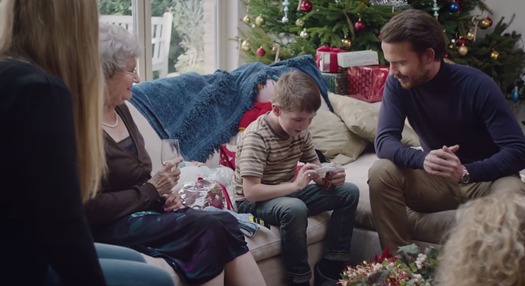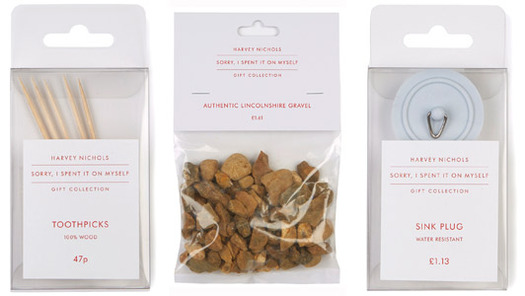
Editor's Note: Gideon Amichay is an advertising executive, marketer and author. He is the founder and chief creative officer of NO, NO, NO, NO, NO, YES, a creative boutique in New York. He also teaches at the School of Visual Arts in New York city. The winner of 19 Cannes Lions for his advertising campaigns, Amichay is currently in Cannes where he will be is sending in regular award dispatches.
Harvey Nichols’ SORRY I SPENT IT ON MYSELF campaign (created by Adam&eve DDB London) won the Grand Prix for Promo + Activation in Cannes and even more Gold Lions in the outdoor category Tuesday night. Yesterday, it won the Grand Prix in the Press Category.
I love this campaign — first and foremost because the campaign itself a product; a real product, a crazy one, and a witty one.
Yes, there was also some advertising as part of the campaign, but the starting point (and the most important part) was a new line of essentially high end, Harvey Nichols-branded gag gifts — think wooden toothpicks, authentic English gravel, plastic doorstops. The gifts came in chic packaging that read, “Sorry, I Spent It On Myself” which was actually available during the holiday season at Harvey Nichols stores across the United Kingdom (and online as well).
In and of itself, a gift collection is not a new idea. But this “gift collection” is fresh, hilarious, and I can honestly say that I don't believe this concept has never been produced before. Like any other new product or new gift collection, this one had power to win consumer attention just by virtue of being at Harvey Nichols with special shelves at every store.

But this particular tongue-in-cheek “gift collection” was designed specifically to deliver a message, which is to spend lots of money at Harvey Nichols ... and to spend it on yourself. This is an example of how a product — or a line of products — can, in fact, deliver a message better than any poster or print ad or commercial.
The difference between an ad and a product is that a product maintains an actual presence in daily life. It will, most likely, retain a stronger and more authentic presence, over time, in the consumer’s mind; and it's perhaps equally probable that people will see it at the right place and at the right time. An ad campaign in the guise of a gift collection takes the concept of an ad and makes it tangible by making it ubiquitous and, by conjecture, infiltrating the consumer’s psyche.
Indeed, selling the concept of selfishness — and during a holiday season that is, traditionally, all about giving — helped create a powerful emotional connection between consumers and Harvey Nichols. Promoting selfishness can easily backfire — but doing it in a clever and unique way lent a much-appreciated dose of honesty to the Christmas season. This particular campaign provided a welcome respite from the commercialization of Christmas and one that consumers found remarkably refreshing.
In an era that might best be characterized by consumers on the lookout for things to discover and share — we have social media to thank for this — the “Sorry, I Spent It On Myself” angle gave them just that: something to post online and share. As far as getting the consumer to do the advertising for you? Mission accomplished.
This slogan would have worked perfectly well in a print ad or on a poster, but realizing it as a line of products took the concept to another level entirely. The result is brilliant.
Perhaps not surprisingly, all the products from the gift collection were sold out in three days. At a reasonable price point, they represent perhaps the classic impulse buy, and why? Simply put, it met several key consumer quota:
It was cool to buy.
It was cool to receive.
It was a cool thing to be connected with.
Either way, the consumer was hooked, and by connecting consumers to the gifts themselves, the advertising campaign succeeded beyond expectation. The success of the “Sorry, I Spent It On Myself” campaign shows that creating a product as a communication platform is better than creating mere advertising. That’s because products last – and campaigns rarely do. (I’m reasonably sure that anyone who received something from the Harvey Nichols Gift Collection kept it. Can you imagine that any of them would have kept the print ad alone? Unlikely.) It is products, not the ads that represent them, that reach people intent on spending. By making this connection, this Cannes win represents a successful combination of key strategic thinking, meticulous visual engagement, and impeccable, market-driven timing. It's a gem.

